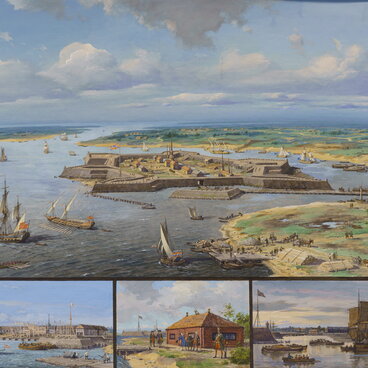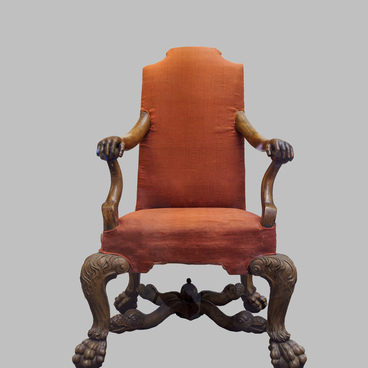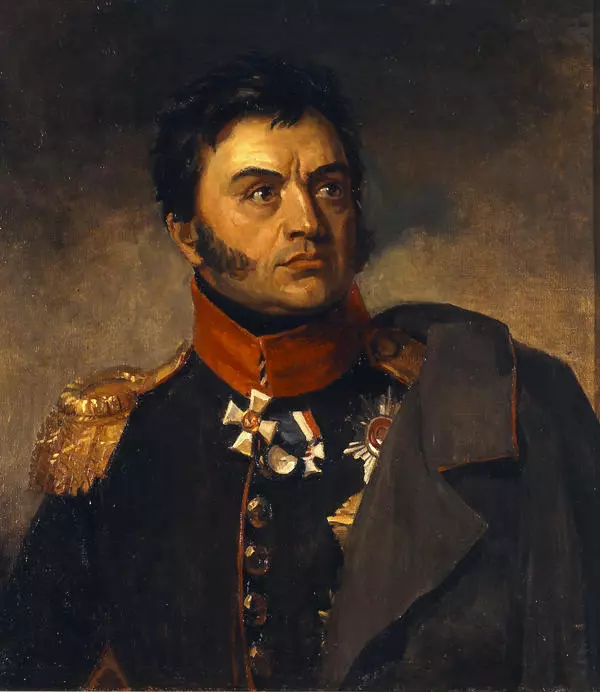Only after the Russians gained a foothold in the estuary of the Neva River, did Charles XII recognize the importance of this tactical move by Peter the Great. In 1704, the King of Sweden started the first major offensive action against Saint Petersburg by sending a squadron commanded by Vice Admiral Depru to the Gulf of Finland, and ground forces led by General Georg Johan Maidel from the side of Vyborg. Having reached Kotlin, Depru realized that it was impossible to launch an attack by passing the Kronschlot Fortress and limited his actions to bombing the fortress without causing it any damage. The ground forces that approached the Nyenschantz Fortress from Vyborg also experienced a similar failure. At the same time, in 1704, Russian forces captured the Swedish city of Derpt (ancient Yuryev) and Narva (ancient Kolyvan), where the young Baltic Fleet distinguished itself by delivering landing forces and food supplies for the troops besieging Narva.
Hoping to rectify his mistakes, in 1705, Charles XII sent larger naval forces to Kotlin under the flag of Admiral Cornelius Anckarstierna, including 24 ships, and a reinforced corps of Maidel on land. Thanks to the energy and administrative abilities of Vice Admiral Cornelius Cruys, who was assigned with the defense of Kotlin by Peter the Great, the Baltic Fleet located near the island became so strong that with the help of Kronschlot it shattered the attack of the considerably stronger and more experienced Swedish Fleet.
On June 4, several Swedish vessels approached Kotlin and started firing against the Russian Fleet and coastal fortifications, but met with retaliatory fire, they soon retreated to the sea. The next day, the Swedish admiral carried out a landing on the Kotlin Spit but was repelled by the squad of Colonel Fedot Semyonovich Tolbukhin. After two failed attacks on the Russian Fleet, the Swedes retreated from Kotlin. On July 14, 1795, having approached the end of the Kotlin Spit with large forces, they made a landing but were crushed by the squad of the brave Tolbukhin whose name was eternalized by the lighthouse built on that spot later. During the landing, the Swedes suffered 560 casualties, and their defeat was so heavy, that the Swedish Navy never repeated such attacks. Maidel’s corps that had aimed to destroy Saint Petersburg, reached the bank of the Malaya Neva River where it was also repelled by Roman Vilimovich Bruce, the commander of the Peter and Paul Fortress. The corps suffered heavy losses and retreated. These successes delighted Peter the Great and raised the spirits of sailors and soldiers who became more and more confident of victory.
Hoping to rectify his mistakes, in 1705, Charles XII sent larger naval forces to Kotlin under the flag of Admiral Cornelius Anckarstierna, including 24 ships, and a reinforced corps of Maidel on land. Thanks to the energy and administrative abilities of Vice Admiral Cornelius Cruys, who was assigned with the defense of Kotlin by Peter the Great, the Baltic Fleet located near the island became so strong that with the help of Kronschlot it shattered the attack of the considerably stronger and more experienced Swedish Fleet.
On June 4, several Swedish vessels approached Kotlin and started firing against the Russian Fleet and coastal fortifications, but met with retaliatory fire, they soon retreated to the sea. The next day, the Swedish admiral carried out a landing on the Kotlin Spit but was repelled by the squad of Colonel Fedot Semyonovich Tolbukhin. After two failed attacks on the Russian Fleet, the Swedes retreated from Kotlin. On July 14, 1795, having approached the end of the Kotlin Spit with large forces, they made a landing but were crushed by the squad of the brave Tolbukhin whose name was eternalized by the lighthouse built on that spot later. During the landing, the Swedes suffered 560 casualties, and their defeat was so heavy, that the Swedish Navy never repeated such attacks. Maidel’s corps that had aimed to destroy Saint Petersburg, reached the bank of the Malaya Neva River where it was also repelled by Roman Vilimovich Bruce, the commander of the Peter and Paul Fortress. The corps suffered heavy losses and retreated. These successes delighted Peter the Great and raised the spirits of sailors and soldiers who became more and more confident of victory.







